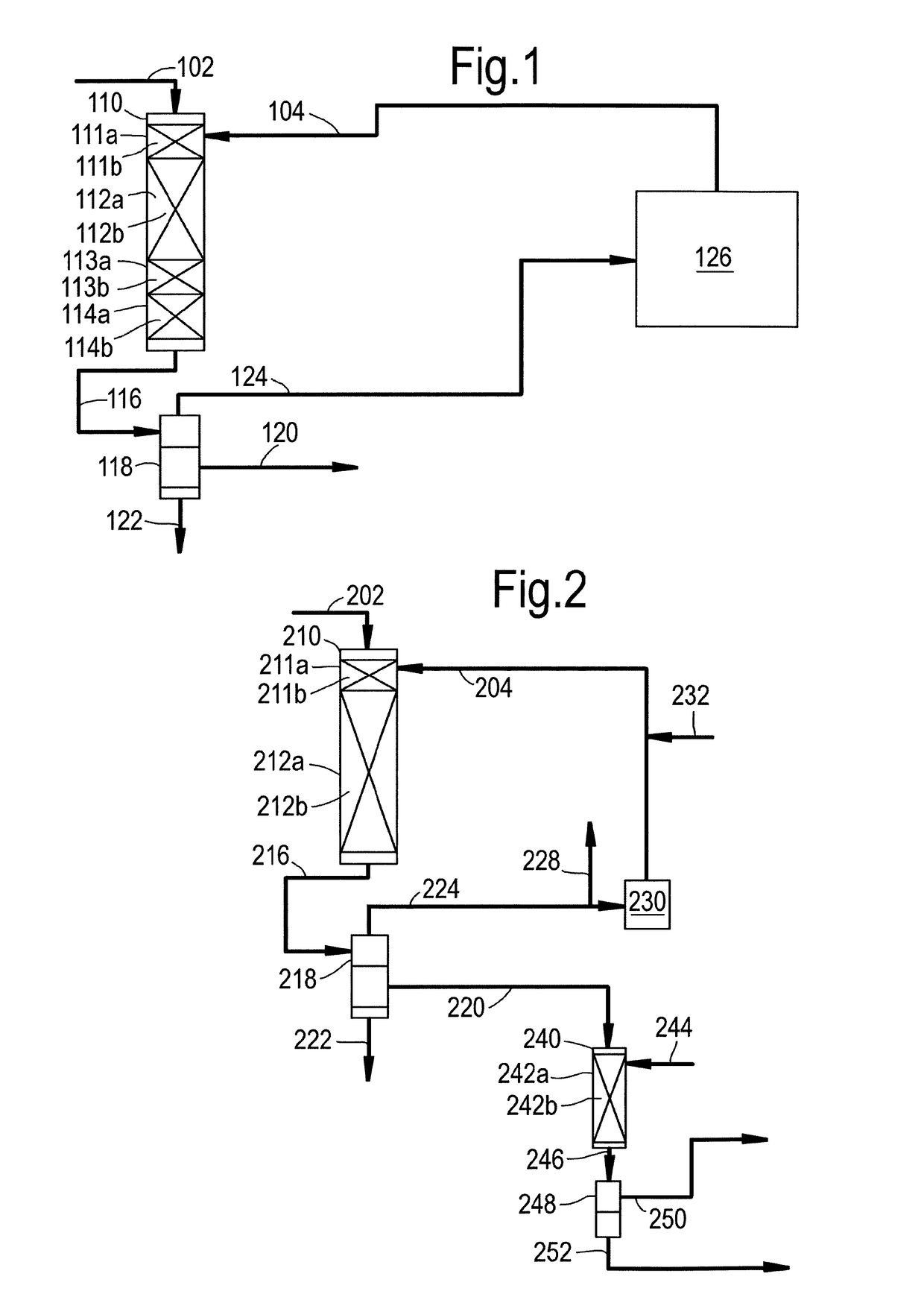Process for converting one or more C3—C12 oxygenates
a technology of converting oxygenates and oxygenates, applied in the field of process for converting one or more c3—c12 oxygenates, can solve the problems of limited excessive coking and subsequent deactivation of catalysts, and prior art catalyst deactivation may become an issue, etc., and achieve the effect of not affecting the viability of converting oxygenates into hydrocarbons
- Summary
- Abstract
- Description
- Claims
- Application Information
AI Technical Summary
Benefits of technology
Problems solved by technology
Method used
Image
Examples
Embodiment Construction
[0019]In the process according to the invention a feed comprising one or more C3-C12 oxygenates is converted.
[0020]In addition to the one or more C3-C12 oxygenates the feed may comprise one or more other components. Examples of such other components include paraffinic, olefinic and / or aromatic hydrocarbon compounds.
[0021]The feed may also contain oxygenates other than the C3-C12 oxygenates, respectively other than the oxygenates as described in the below preferences. In a preferred embodiment, however, the feed contains essentially no oxygenates other than the C3-C12 oxygenates, respectively other than the oxygenates as described in the below preferences.
[0022]Preferably the feed comprises at least 50 wt %, more preferably at least 70 wt % (weight percentage), and most preferably at least 90 wt % of one or more C3-C12 oxygenates, based on the total weight of the feed. The feed may for example comprise in the range from equal to or more than 50 wt % to equal to or less than 99.9 wt %...
PUM
| Property | Measurement | Unit |
|---|---|---|
| Molar Ratio | aaaaa | aaaaa |
| Molar Ratio | aaaaa | aaaaa |
| Molar Ratio | aaaaa | aaaaa |
Abstract
Description
Claims
Application Information
 Login to View More
Login to View More - R&D
- Intellectual Property
- Life Sciences
- Materials
- Tech Scout
- Unparalleled Data Quality
- Higher Quality Content
- 60% Fewer Hallucinations
Browse by: Latest US Patents, China's latest patents, Technical Efficacy Thesaurus, Application Domain, Technology Topic, Popular Technical Reports.
© 2025 PatSnap. All rights reserved.Legal|Privacy policy|Modern Slavery Act Transparency Statement|Sitemap|About US| Contact US: help@patsnap.com

